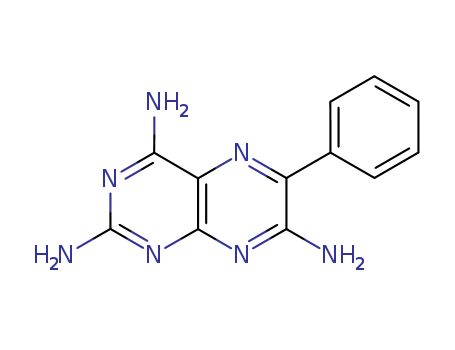- Chemical Name:Triamterene
- CAS No.:396-01-0
- Molecular Formula:C12H11N7
- Molecular Weight:253.266
- Hs Code.:2933997500
- European Community (EC) Number:206-904-3
- NSC Number:757367,77625
- UNII:WS821Z52LQ
- DSSTox Substance ID:DTXSID6021373
- Nikkaji Number:J2.040K
- Wikipedia:Triamterene
- Wikidata:Q221520
- NCI Thesaurus Code:C29519
- RXCUI:10763
- Pharos Ligand ID:HVBUKXJVYVL3
- Metabolomics Workbench ID:37945
- ChEMBL ID:CHEMBL585
- Mol file:396-01-0.mol
Synonyms:Dyrenium;Dytac;Triamterene;Urocaudal



 Xn,
Xn,  T,
T,  F
F


